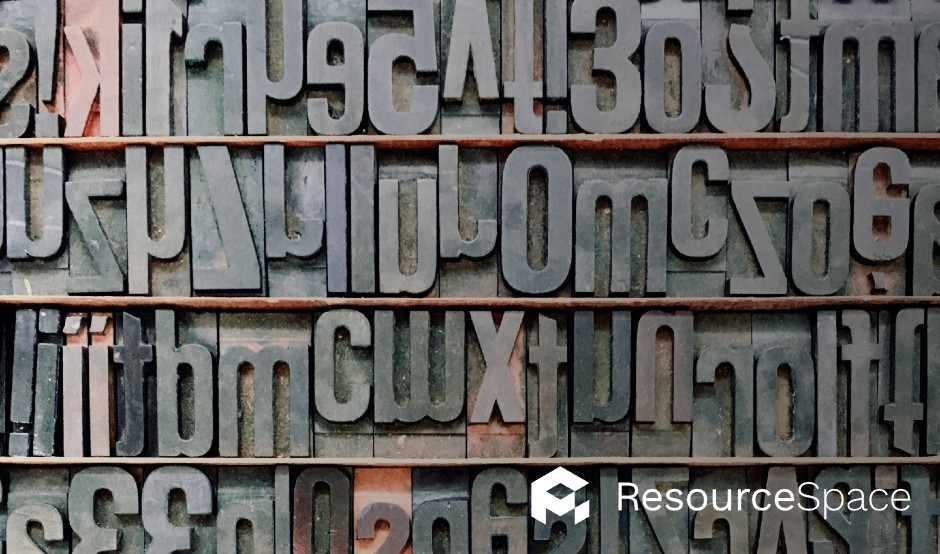
The team at ResourceSpace have been a joy to work with, helping us manage what could've been a really difficult transition every step of the way.
Blog
4th March 2024

You’re probably already aware of the issues your organisation can run into if it uses visual media that it doesn’t have usage rights for. Whether it’s a photograph, graphic, video or animation, if you publish it without permission you could be liable.
However, what you might not know is that the same can apply to fonts—but you wouldn’t be alone in not considering font usage rights when developing your brand guidelines.
And this would be an understandable oversight. After all, fonts are so often free to use, whether you’re writing documents in Microsoft Word, publishing blogs to your website via WordPress, or creating graphics in Adobe Photoshop.
With so many free-to-use fonts available, why do companies bother choosing a custom font for their branding anyway?
Although it might seem subtle—as is the case with most elements of branding—your font is everywhere in your brand. The website, your logo, sales and marketing collateral, external email templates—the list goes on. The key to building brand recognition is consistency, and font is a big part of that.
What’s more, fonts have the power to set different tones for a brand. For example, sans serif fonts like Raleway and Lato are associated with modernity, while serif fonts like Times New Roman and Georgia are associated with feelings of trust, stability and reliability.
If your brand simply uses Arial, Verdana, Times New Roman or one of the other license-free fonts, then you don’t have to worry about font risk (although building brand recognition might be a concern).
However, if you want your brand’s typeface to be a font that’s less commonly used, you’re going to have to purchase the appropriate End User License Agreement (EULA). A font’s EULA dictates how a font can be used, and you need to make sure you purchase the correct license based on how you wish to use it. For example:
Alternatively, a font foundry (a company that designs or distributes typefaces) might offer tiered license options based on a variety of factors including website traffic, social media use and more.
The difference between how a font is used and what the specific license permits is where font risk occurs most often.
The implication of using a font you don’t have a license for, or using a font in a certain way not permitted by the license, is that the font foundry will look to enforce its copyright and hold you accountable for misuse. This will typically be in the form of a cease and desist notice, as well as potential financial penalties. Foundries will employ a number of tactics to identify and verify how their fonts are being used, including software designed specifically for finding license violations.
There have been some high profile cases of font misuse, and some hefty lawsuits have followed.
For example, in 2017 the confectionary company Haribo was sued for using a font on its Trick or Treat Mix packaging when it only had the desktop license. NBCUniversal was sued three times in 2009, 2011 and 2012—again because the company had bought font licenses, but was using fonts outside of the EULA’s scope.
A dedicated Digital Asset Management system significantly reduces the likelihood of using images that your organisation doesn’t have a license for because you can closely control what assets users actually have access to—but a DAM can also help mitigate font risk.
In ResourceSpace, you can store your brand guidelines, and any associated files, in a dedicated Collection. This Collection can then be added to the dash, making it easily accessible and ensuring it’s front of mind for the DAM users. You can even introduce terms of use on specific downloads, requiring users to agree to adhere to the brand guidelines when using content they've downloaded.
What’s more, in an upcoming ResourceSpace update (version 10.5) we’re introducing a dedicated section, accessible from the main header, for managing your brand guidelines. This will allow resources to be embedded within content directly from the DAM, making it much less likely employees will use resources the organisation doesn’t have permissions for.
This new Brand Guidelines Area will be very easy to use, with a clear navigation tree that makes it easy to access whatever you need.
If you’d like to find out more about ResourceSpace and how it can help your organisation to mitigate font risk, as well as protect your brand guidelines, get in touch with our team. Alternatively, book a free demo today by clicking below.
#LegalCompliance
#BrandGuidelines
#BrandRecognition
#Consent
#Copyright
#BestPractice
#ResourceSpaceTips
#IndustryNews
#BrandConsistency